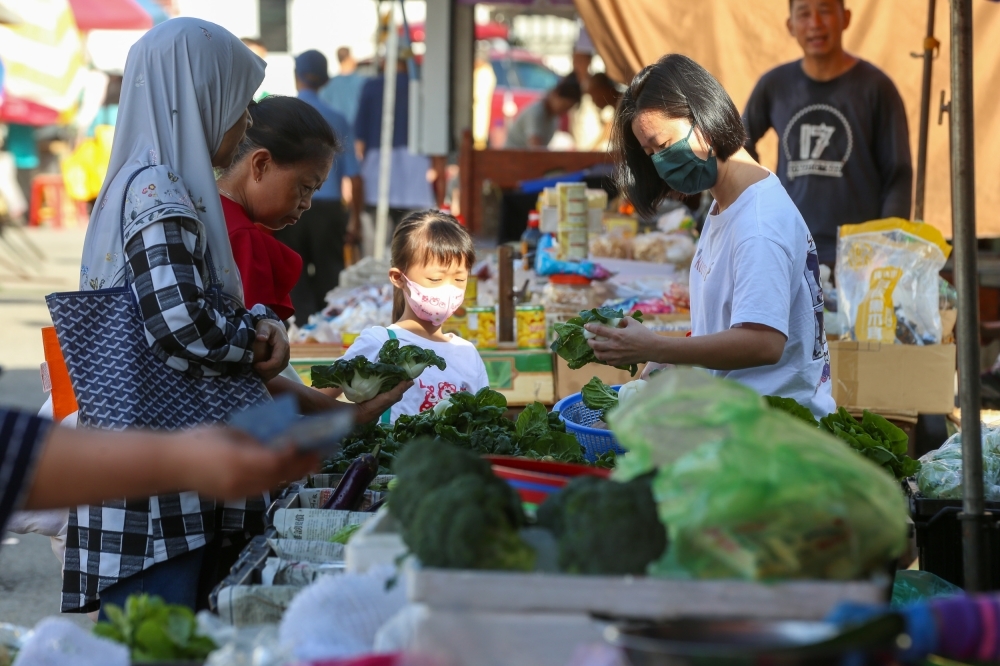
Here’s why feeding a family in Penang or KL can be cheaper than in other states, according to the chief statistician

Chief statistician Datuk Seri Mohd Uzir Mahidin today shed light on why food expenditures tend to be lower in urban areas like Penang and Kuala Lumpur, compared to Terengganu and Melaka. — Picture by Choo Choy May
Thursday, 14 Nov 2024 3:58 PM MYT
KUALA LUMPUR, Nov 14 — Chief statistician Datuk Seri Mohd Uzir Mahidin today shed light on why food expenditures tend to be lower in urban areas like Penang and Kuala Lumpur, compared to Terengganu and Melaka.
He explained that several economic factors — particularly supply, demand and population density — play a significant role in driving these differences in spending.
According to Uzir, high population density in larger cities allows businesses to cater to a larger volume of buyers. This enables sellers to keep prices competitive, even when profit margins are low.
“That is influenced by many factors. First is the output cost itself to produce products. Another one, it also depends on the players and volume (of people) in the areas concerned.
“We can see that in some areas, the average prices can be low when sellers are able to cater to a huge volume of buyers. So they get gains not on margin, but based on the volume of quantities. We can prove this,” he stated, emphasising that the economics of scale in densely populated areas work to keep costs down for consumers.
In contrast, businesses in rural areas face challenges due to lower customer volume, which in turn, drive up costs. With fewer customers to serve, businesses in these areas cannot rely on volume to offset other expenses.
“For example, some items in the rural areas are expensive because there is a scarcity of supply,” Uzir explained, during a question and answer session at the Department of Statistics Malaysia’s (DOSM) townhall programme today.
This scarcity forces businesses to raise prices to offset the lack of customer volume, he explained, adding that these price hikes can sometimes appear counterintuitive given that operating costs, like rent, are lower in rural regions.
During the session, Uzir was asked to explain the disparity in food prices, which appeared lower in major cities and higher in rural areas.
He explained that this scarcity often mean that items are priced higher to cover operating costs, even if rentals and other fixed costs are lower in rural areas.
Using a barbershop as an example, Uzir illustrated that in high density areas, customer volume helps keep prices competitive as overhead costs are distributed across a large client base. However, in rural areas, lower customer volume often means that prices are higher to maintain viability.
“There is a combination of many factors actually,” he concluded.
He was expounding on DOSM’s Basic Expenditure for Decent Living Indicator (PAKW) unveiled early this month.
The PAKW is a new indicator that calculates the cost of living a decent life and allows the public to measure monthly expenditures for essential goods and services according to geography, household size and age group.
After factoring in all the variables, the calculator shows that feeding a family in Kuala Lumpur is more affordable than in several other states.
In the session today, Uzir was asked to elaborate on this finding.
According to the PAKW, feeding a family in Kuala Lumpur is, on average, cheaper than in several other states. For a household of 3.2 members, the monthly cost to meet the required nutrient intake (RNI) set by the Ministry of Health is around RM1,487, which is significantly cheaper than in states like Melaka (RM1,810), Johor (RM1,751), Sarawak (RM1,795), Sabah (RM1,747), and Pahang (RM1,642).
The state with the lowest food expenditure requirement per household is Perak, at RM1,432.
Perlis had a PKAW average just RM1 cheaper than Kuala Lumpur’s while Negeri Sembilan and Kedah were not far off at RM1,554 and RM1,524 respectively.
Penang, despite being one of the country’s largest cities, also has one of the lowest monthly food expenditure requirements per household at RM1,510.
The state with the highest monthly food expenditure per household is Selangor at RM1,881, while Terengganu came in at a surprising second with RM1,842.
Do note that the average food expenditure also calculates the cost of dining out.
Penang folks also historically well-known for their thriftiness.. the notorious "bullock-cart wheel sized" ringgit.. wakaka
ReplyDeleteInflation has no doubt impacted Penang as well, but there is stronger resistance to price increases.
Naaah....its all DUE to The TRICK WE OTHER MALAYSIAN PLAY AGAINST the Facist Racist terrorost Hamas Supporting Race and RELIGION.....Its ALL ABOUT KITA JAGA KITA TOLAK HAMAS TERRORIST ISAM...LET THOSE FACIST RACIST FRIDAY OFF SUPREMACIST RELIGION FIGHT FOR THEIR OWN SURVIVAL....
ReplyDeleteThe choices within the main daily consumption basket r also a major determinator.
ReplyDeleteie sugary products constituting major ingredients of the kampong daily diet.